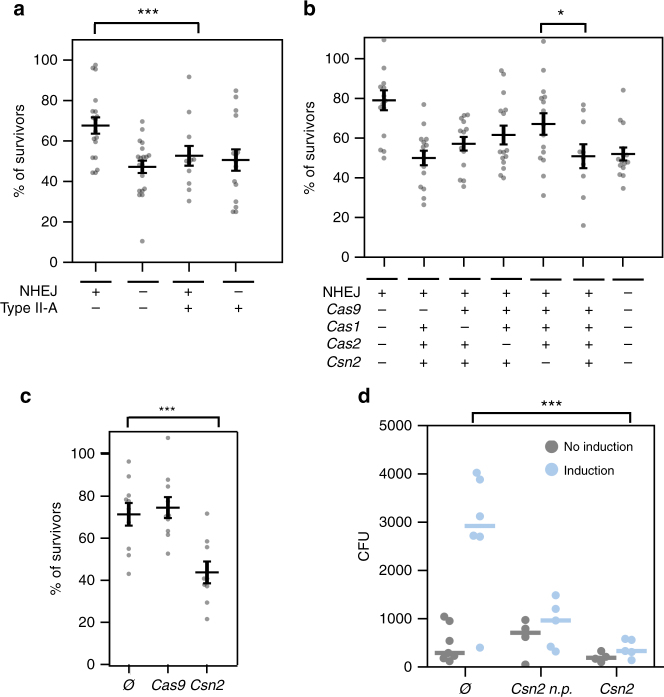Fig. 4.
Csn2 impacts NHEJ repair. Survival rates of irradiated B. subtilis cells. a–c Individual replicates (points) and average (horizontal bars) are shown. Error bars correspond to the standard error of the mean (s.e.m.). a Cells carrying the type II-A CRISPR-Cas system (pRH87) or the control empty vector (pC194), and deleted for ku and ligD or not (P = 0.0009, Wilcoxon's). b B. subtilis carrying the CRISPR-Cas system with the dCas9 mutations (pRH121) or deleted for csn2 (pRH63), cas1 (pRH61), or cas2 (pRH62) (P = 0.02, Student's two-sided t test after validation of normality and homoscedasticity). c B. subtilis carrying the empty pC194 plasmid (Ø), expressing csn2 from plasmid pAB56 or cas9 from plasmid pDB114 (P = 0.0048, Wilcoxon's). d A linearized plasmid providing resistance to chloramphenicol (pC194) was electroporated into S. aureus RN4220 cells carrying the NHEJ system either alone (plasmid pAB1, Ø) or with csn2 cloned downstream of ligD (plasmid pAB81, csn2) or under the control of its natural promoter (plasmid pAB82, csn2 n.p.). The number of CFUs obtained with or without induction of the NHEJ system using aTc are reported. The number of CFU obtained without induction (gray bars) indicate the background of already circular DNA present in the sample before electroporation (P = 0.006, two-sided t test)

